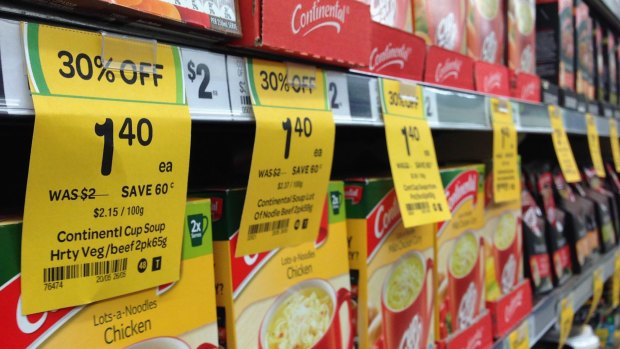Save articles for later
Add articles to your saved list and come back to them any time.
Bringing inflation down is likely to be drawn out and could be a bumpy road, a senior Reserve Bank economist has warned while revealing people may struggle to get the hours at work they want even as overall unemployment remains low.
The bank’s acting assistant governor for the economy, Marion Kohler, this morning used a speech in Sydney to argue that while there were promising signs price growth for goods was subsiding, inflation across the services sector remained elevated due to strong domestic demand.
The Reserve Bank has warned of a bumpy inflation ride ahead as prices for many goods remain high.Credit: Quinn Rooney
The RBA last week took the official cash rate to a 12-year high of 4.35 per cent, it’s 13th interest rate increase since May last year. It also updated its key economic forecasts, with inflation only expected to get back into the Reserve’s 2-3 per cent target band by late 2025.
Kohler told the UBS Australasia conference that while inflation had fallen from its peak of almost 8 per cent at the end of last year to 5.4 per cent, it may not drop as rapidly in coming months.
“The next stage in bringing inflation back to target is likely to be more drawn out than the first. This has been the experience of some other advanced economies that have been a little ahead of Australia in this inflation cycle,” she said.
“The recent increase in fuel prices is also a timely reminder that upside surprises from supply shocks could affect headline inflation. All to say, the road ahead could be bumpy.”
A cyberattack on port operator DP World, which manages 40 per cent of Australia’s container shipments through terminals in Sydney, Melbourne, Brisbane and Fremantle, has prompted concerns it could add to Australia’s inflation pressures.
Kohler said domestically sourced inflation had been “widespread and slow to decline”, with services – which account for about a fifth of the consumer price index – continuing to rise “briskly”.
“More broadly, still-strong levels of demand have allowed businesses to pass on cost increases to customers. Business costs such as energy, rent and insurance have risen strongly, and labour costs have been pushed up by poor productivity outcomes,” she said.
“Wages growth has also picked up over the past year, but now appears to have broadly stabilised and is forecast to decline gradually over the next couple of years as labour market conditions ease.”
Despite its most recent interest rate rise, the Reserve Bank believes unemployment will not lift as far as it had been anticipating. It is now forecasting the jobless rate to edge up from its current level of 3.6 per cent to 4.25 per cent by the end of 2025.
Kohler said there were signs the very tight labour conditions of the past year were easing.
But rather than this translating into a jump in the jobless rate, Kohler said the average hours worked – which have surged over the past year – was likely to fall.
“This reflects a longer-run structural shift in the way the labour market adjusts during
periods of slow growth,” she said.
“Broader labour under utilisation rates are also expected to rise gradually as the labour market moves into balance.
“We currently expect a further gradual easing in the labour market resulting from a period of below-trend growth in aggregate demand for goods and services.”
Cut through the noise of federal politics with news, views and expert analysis from Jacqueline Maley. Subscribers can sign up to our weekly Inside Politics newsletter here.
Most Viewed in Politics
From our partners
Source: Read Full Article



